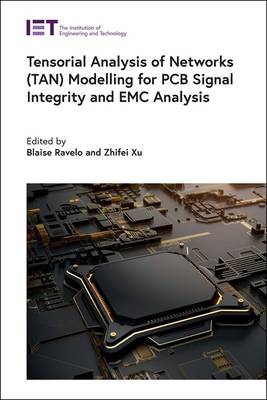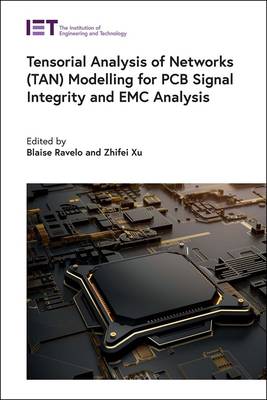
- Retrait gratuit dans votre magasin Club
- 7.000.000 titres dans notre catalogue
- Payer en toute sécurité
- Toujours un magasin près de chez vous
- Retrait gratuit dans votre magasin Club
- 7.000.0000 titres dans notre catalogue
- Payer en toute sécurité
- Toujours un magasin près de chez vous
Tensorial Analysis of Networks (Tan) Modelling for PCB Signal Integrity and EMC Analysis
Description
This book describes a fast, accurate and flexible modelling methodology for PCBs. The model uses the concept of tensorial analysis of networks (TAN) based on Kron's and Kron-Branin's methods adapted for the EMC use by O. Maurice. The TAN approach is applied to the PCB SI and electromagnetic compatibility (EMC) analysis.
Each chapter presents a methodology consisting of the problem formulation, classical circuit description, TAN primitive elements, TAN graph topology elaboration, problem metric mathematization and the posed-problem resolution based on Python and Matlab routine algorithms. This methodical approach has been applied to the following topics: basic knowledge to practice TAN for PCB SI/PI/EMC investigation; PCB primitive components analysis with TAN; analytical calculation of PCB trace Z/Y/T/S matrices with TAN approach; fast S-parameter Kron-Branin's modelling of rectangular wave guide (RWG) structure via mesh impedance reduction; time domain TAN modelling of PCB system with Kron's method; direct time-domain analysis with TAN method for PCB modelling; coupling between EM field and multilayer PCB with MKME; conducted emissions (CE) EMC TAN modelling; PCB conducted susceptibility (CS) EMC TAN modelling; PCB radiated susceptibility (RS) EMC TAN modelling; TAN model of loop probe coupling onto shielded coaxial short-cable; nonlinear behaviour conduced EMC model of an ADC based mixed PCB under radio frequency interference (RFI); far-field prediction combining simulations with near-field measurements for EMI assessment of PCBs; and element of information for numerical modelling on PCB.
With its highly systematic approach to addressing TAN modelling methods, this book provides key information and novel solutions to the designers and manufacturers of analogue, RF, digital and mixed signal electronic circuits and systems.
Spécifications
Parties prenantes
- Editeur:
Contenu
- Nombre de pages :
- 400
- Langue:
- Anglais
- Collection :
Caractéristiques
- EAN:
- 9781839530494
- Date de parution :
- 08-09-20
- Format:
- Livre relié
- Format numérique:
- Genaaid
- Dimensions :
- 163 mm x 239 mm
- Poids :
- 793 g

Les avis
Nous publions uniquement les avis qui respectent les conditions requises. Consultez nos conditions pour les avis.





